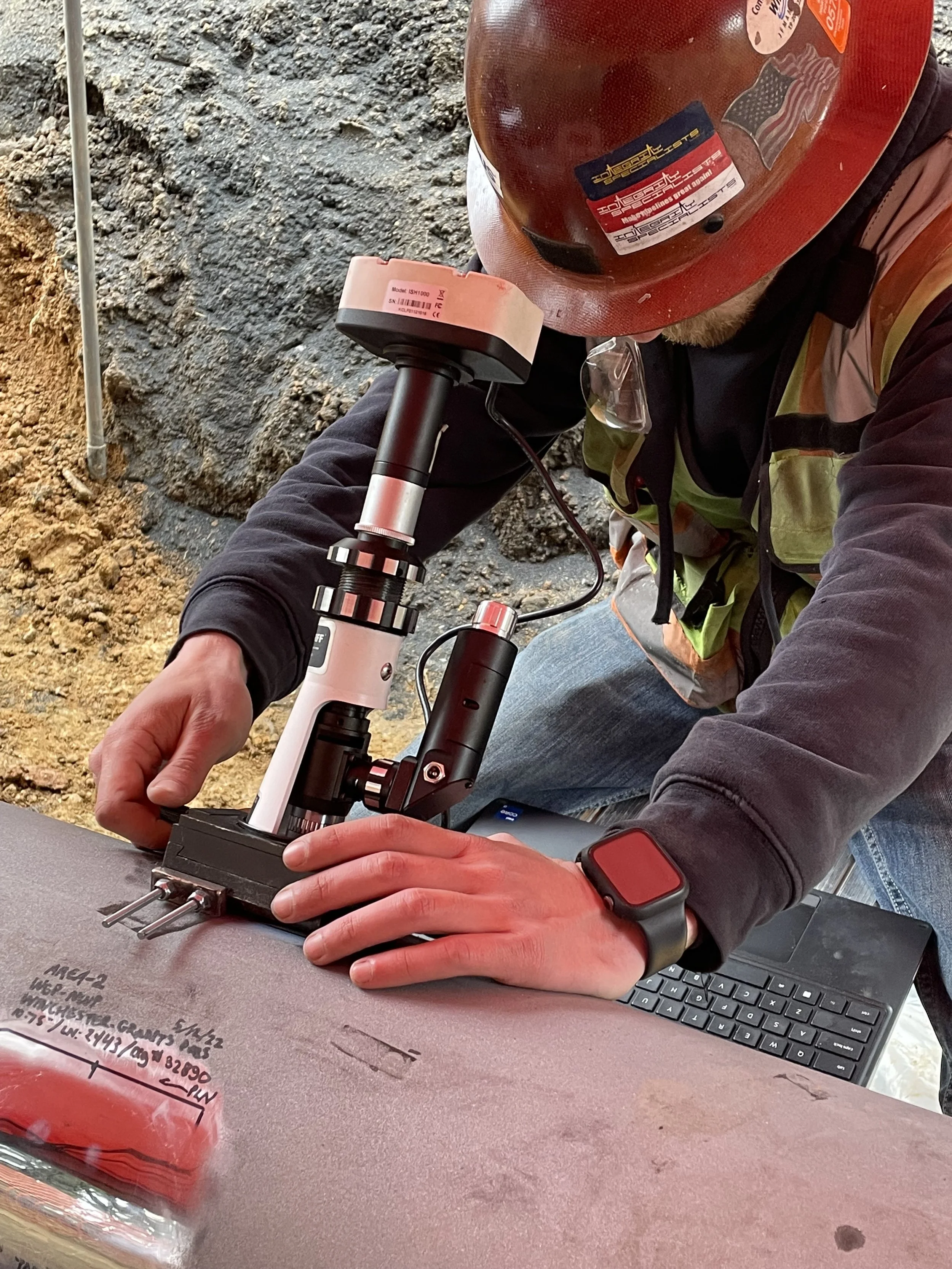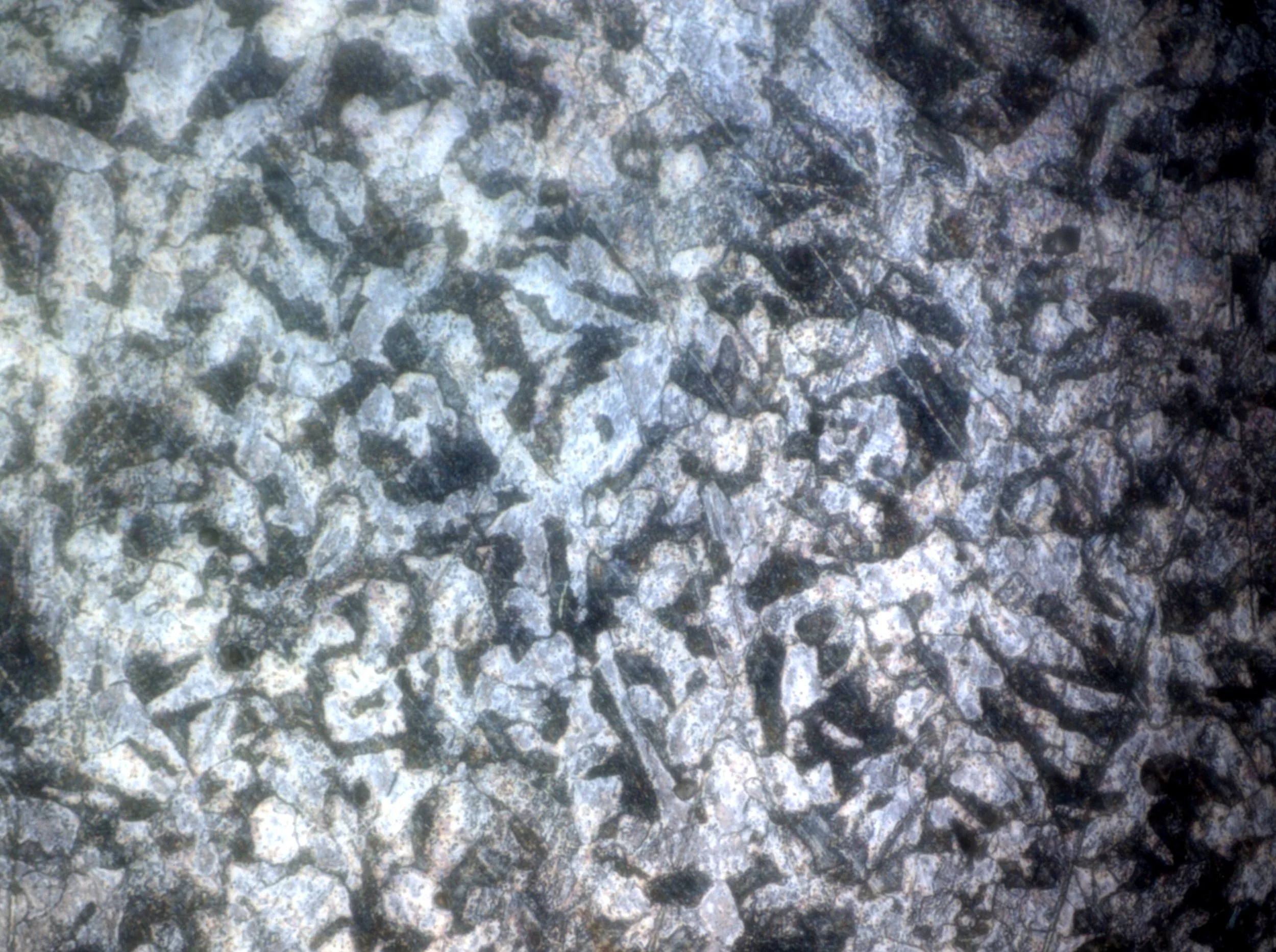PRCI NDE-4C Material Verification
Basic steps:
Locate and document 2 quadrats of pipe 90 degrees opposed
Measure WT and circumference
Sand 0.004”-0.010” (Min 320 Grit)
Take chemical and carbon readings
Take hardness readings
Continue the polish to a mirror finish
Etch the surface
Gather microstructure pictures with microscope
Analyze Microstructure with software (Perciv)
Input all results into checkmate
Complete final report
Information gathered in-field during method:
Metallurgical Characteristics
• Grain Size
• Pearlite Volume Fraction
• Inclusion Volume Fraction – Correlation to ToughnessChemical Analysis
• Carbon %
• Silicon, Sulfur, Manganese, Phosphorous, Silicon, Aluminum, Chromium, Molybdenum, CopperHardness, Strength and Toughness Values
Pipe Geometry
• The smaller the pipe, the more erratic the transverse charpy test results
• Seam welded pipe-often rolled and hydrostatically expanded to achieve final dimensions (work hardening)
Advantages:
Performed well in PRCI round robin study against other methods
Lower equipment costs
More trained technicians
Can perform anomaly investigation and material verification at the same time
Can confirm material grade of in-service pre-1980’s pipe
FRONTICS Material Verification
Tensile properties software based on the theory of IIT (Instrumented Indentation Technique) - evaluation items: yield strength, tensile strength, work-hardening exponent, elastic modules
Possible to measure and analyze in real time by using a laptop
Possible to load All-in-one software (Fracture Toughness Test, Hardware Test software)
Possible to perform all things such as testing, analyzing, collecting DB and making a report with one software
Batch analyzing function for multiple data sets
Instantaneous results
Can analyze pipe grade of in-service pipe of all vintages
In-situ metallography is not required




